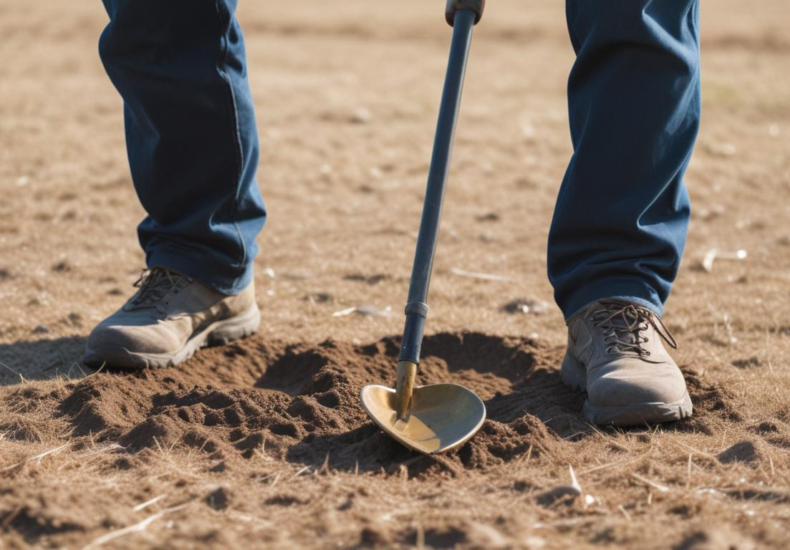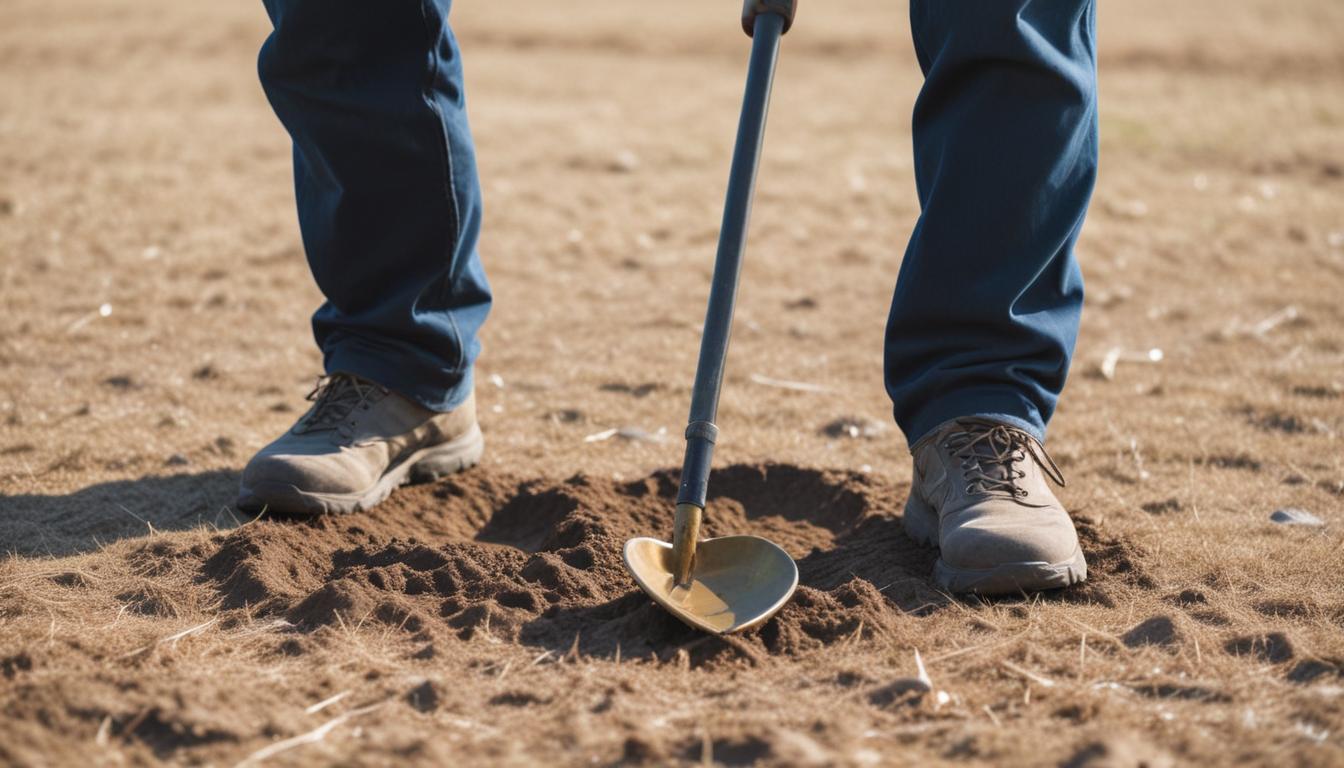
How weather conditions affect metal detecting
The performance of a metal detector can be significantly influenced by ambient temperature conditions, which in turn, affects the overall experience and success of detecting activities. Metal detectors, being electronic devices, are sensitive to extreme temperatures. High temperatures can cause the electronic components within the detector to expand and perform inefficiently, potentially leading to false signals or even system failures. On the other hand, low temperatures can make the LCD displays sluggish and reduce battery life more quickly than usual, which can shorten your detecting sessions unexpectedly.
Specifically, the sensitivity and depth at which a metal detector can locate objects may vary with temperature fluctuations. For instance, in warmer conditions, certain metals might expand slightly, potentially making them easier to detect as their electrical conductivity increases. Conversely, colder temperatures might contract and harden the soil, making it more difficult for the electromagnetic waves from the metal detector to penetrate effectively.
For enthusiasts looking for detecting tips, it is crucial to consider the weather impact before planning a session. During extremely hot or cold days, it might be beneficial to adjust the sensitivity settings of the device or to plan your excursions during the parts of the day when the temperature is more moderate. Moreover, understanding how your specific model of metal detector reacts to different temperature ranges can greatly enhance your detecting efficiency and results.
Rain and soil conductivity: Enhancing detection capabilities
Moisture levels in soil can dramatically impact the effectiveness of a metal detector, and this becomes particularly evident during and after a rainfall. When it rains, the water saturates the soil, enhancing its conductivity. What this means for metal detecting enthusiasts is that their devices can become more sensitive to buried metal objects, potentially increasing the depth of detection.
The principle here is relatively straightforward: wet soil can better carry the electromagnetic signals from a metal detector than dry soil. This increased conductivity allows the signals to penetrate deeper and more uniformly, making it easier to find targets that might otherwise be beyond the reach of your detector in drier conditions. As a result, rainy conditions or recently wetted soils may often present ideal opportunities to discover metal objects that are typically harder to detect.
However, while increased soil conductivity can enhance detection capabilities, it can also lead to higher instances of false signals or “ground noise.” To maximize efficiency during these conditions, some adjustments might be necessary. For instance, reducing the sensitivity of your metal detector can help minimize ground noise, thereby making the actual target signals clearer and more discernible. This is a handy detecting tip for ensuring that your wet weather expeditions are as productive as possible.
Additionally, it’s essential to consider the type of soil you’re working with. Clays and other dense soils might retain water longer, further increasing conductivity even days after a rainfall. On the other hand, sandy soils, which drain quickly, may require immediate detecting after rains to take full advantage of the temporarily enhanced soil conditions.
Understanding how rain and wet conditions influence soil conductivity and, ultimately, the performance of your metal detector can significantly improve your detecting results. Being adaptable and knowing when to adjust your equipment settings is a key factor in leveraging these weather-driven opportunities for metal detecting.
Effects of wind and atmospheric pressures on detecting
Strong winds and changes in atmospheric pressure can also affect metal detecting, though their impact is generally less direct compared to temperature or moisture conditions. Wind can influence detecting in various ways, mainly by affecting the surface conditions that metal detectors must work through. For example, high winds can move loose soil, sand, or debris, potentially uncovering new areas for exploration or conversely, burying targets deeper under shifted materials. This dynamic change in the landscape can either create unexpected opportunities or additional challenges for detectorists.
Atmospheric pressure variations, while subtle, can have an impact on the performance of metal detectors. Lower atmospheric pressure, often associated with stormy weather, can change the way sound travels through air, potentially altering the audio feedback that metal detectors rely on to signify targets. This shift could affect the interpretation of signals, an important consideration for those aiming to maximize the effectiveness of their detecting sessions.
Detecting tips for windy conditions include using heavier coil covers to stabilize your sweeps, and focusing on areas where wind might have removed topsoil, exposing deeper layers. Moreover, it’s useful to be aware that wind can affect your physical comfort and stamina, which indirectly affects your ability to operate a metal detector efficiently. Ensuring proper gear and preparation for wind can help maintain stamina and focus during lengthy sessions.
Understanding the subtle ways in which changes in wind and atmospheric pressures can influence metal detecting activities is crucial. By adapting techniques to accommodate these changes, you can enhance your detecting efficiency. Keeping an eye on weather forecasts and learning to anticipate and react to different atmospheric conditions can greatly benefit the outcomes of your metal detecting adventures.
Seasonal changes and their influence on metal detecting

As we move through different seasons, the conditions for using a metal detector fluctuate significantly, impacting both the methodology and success rates of hunts. Spring offers a remarkable time for detecting as the thawing ground makes it easier for metal detectors to penetrate the soil, which can remain moist from melting snow and seasonal rains. This moisture not only enhances the soil’s conductivity (as previously discussed) but also revivifies landscapes, potentially revealing previously concealed targets.
Conversely, summer brings its own set of challenges and opportunities. The warmer weather typically leads to harder, drier soils, especially in regions without regular rainfall. Hard-packed soils can make detecting more demanding as the ground becomes tougher to penetrate with standard coils. However, summer also draws people outdoors, leading to new losses of metallic items at beaches, parks, and festival grounds, which are prime locations for enthusiasts to explore with their metal detectors. A useful detecting tip for summer is to target areas where people gather en masse, as the odds of discovering lost items can increase substantially.
The onset of autumn can signal an optimal detecting season for many, especially as cooler temperatures make for more comfortable conditions and the ground remains soft enough for easy digging but not yet impacted by winter’s harshness. Additionally, foliage begins to die back, reducing the amount of visual obstruction while hunting. Decreases in outdoor human activity mean fewer disturbances in many prime detecting spots. Importantly, the fall season is often dry, offering stable ground conditions that are favorable for detecting deeper targets which were perhaps passed over during busier months.
Winter, however, typically poses the most considerable challenge. Frozen grounds and snow cover can make metal detecting nearly impossible in colder climates. For those who live in areas where the ground freezes, winter may be a time for maintenance of equipment rather than active detecting. This is an ideal period for enthusiasts to review their detecting practices, plan for upcoming warmer weather, and perhaps invest in upgrades or additional accessories for their metal detector.
Each season, thus, while presenting unique hurdles, also holds unique prospects. Adapting to these seasonal changes, such as selecting the right time to hunt, knowing which settings to tweak on your metal detector, and choosing appropriate locations based on the time of year, can greatly influence the success of your detecting efforts. Weather impact on soil conditions, crowd movement, and site accessibility all dictate strategic shifts that seasoned detectorists learn to anticipate and exploit. Following these seasonal detecting tips can help optimize your metal detecting adventures throughout the year.
Best practices for metal detecting in various weather conditions
Approaching metal detecting with a set of best practices tailored to various weather conditions can significantly enhance the quality and outcome of your hunts. First and foremost, having an understanding of the day’s weather forecast can be instrumental. This not only ensures your safety but also assists in decision-making regarding location and timing. Thus, regularly checking weather updates is a recommended practice.
Before heading out, ensure that your equipment is suited to the day’s conditions. For instance, using a waterproof metal detector and coil is essential when detecting in rainy or wet conditions. Waterproof headphones might also be beneficial. On sunny and hot days, detectors with a built-in shade for the screen could reduce glare, making the display easier to read.
Although some might overlook their personal comfort, wearing appropriate clothing and protective gear according to the weather can impact your stamina and detecting ability. In colder temperatures, thermal clothing can keep you warm and focused, whereas light, breathable fabrics are better suited for hot days. Moreover, using anti-fog lens sprays on your goggles or glasses can be crucial during humid or rainy seasons.
The terrain often changes with the weather; hence adapting your detecting strategies is vital. In wet conditions, for instance, you might find it useful to dig slightly wider plugs to prevent the muddy soil from sticking back into the hole you’re working on. Dry and hard soils require the use of sharper and more durable digging tools. Additionally, being aware of how rainfall can expose new treasures or bury old ones deeper into the soil can guide where and how deeply you should dig.
Furthermore, using a metal detector with adjustable sensitivity and ground balance features is crucial, as these adjustments are often required when weather conditions change soil characteristics. These features allow the detector to better distinguish between different types of metals and minimize false readings caused by mineralized grounds, which can vary with moisture levels. This is a handy detecting tip to ensure efficient and fruitful detecting sessions, regardless of fluctuating weather conditions.
Lastly, adopting a flexible attitude toward your metal detecting outings based on weather conditions can make a significant difference. Sometimes, certain weather-related challenges can turn into advantages. For example, after a storm, you might discover that previously packed soils and sands have been loosened, unveiling new and previously unreachable depths for exploration. By embracing these opportunities and adapting your techniques accordingly, you can leverage the weather impact to your advantage, making every outing a potentially rewarding experience.
You may also like
Archives
Calendar
| M | T | W | T | F | S | S |
|---|---|---|---|---|---|---|
| 1 | 2 | |||||
| 3 | 4 | 5 | 6 | 7 | 8 | 9 |
| 10 | 11 | 12 | 13 | 14 | 15 | 16 |
| 17 | 18 | 19 | 20 | 21 | 22 | 23 |
| 24 | 25 | 26 | 27 | 28 | 29 | 30 |
Leave a Reply